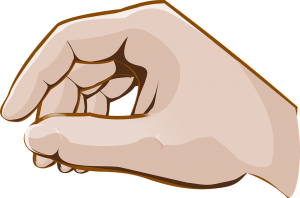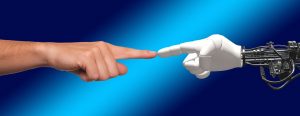How we sense where our body is and what body parts belong to us is crucial for successful interaction with our environments (e.g. Proske & Gandevia 2012). It might seem silly to ask whether a body part belongs to you or someone else, however studies of patients and studies that have used unique experimental manipulations have shown that the sense of body ownership is malleable. For example, a healthy person can feel a strong sense of ownership over an artificial rubber hand located away from their actual hand. Until recently it was thought that signals from multiple sensory sources were required to induce a sense of body ownership. Specifically, it was thought that these signals needed to be temporally and spatially congruent, as well as ongoing (Ehrsson et al. 2004; Constantini & Haggard 2007).
In a previous study (Héroux et al. 2013), we showed that apparent ownership of an artificial finger can be induced using only the information from muscle receptors, even in the absence of vision. This provided evidence that a sense of body ownership could be induced when signals from a single sensory source were available.
In our most recent study (Héroux et al. 2018), we investigated the ability of static touch associated with passively grasping an artificial finger to induce a sense of body ownership over this artificial finger and a change in perceived spacing between one’s hands. In addition, we assessed how the physical characteristics of grasped objects alter these senses. We asked study participants to passively grasp an artificial finger for 3 minutes with their left index and left thumb while their right index finger was located 12 cm below. On a separate day, participants grasped various artificial fingers which differed in temperature (hot and cold), compliance (firm and soft), texture (rough and smooth), and shape (odd, rectangular). Participants could not see their own hands or the artificial finger, and a number of innovative methods were used during the experiments (for comments see Brooks 2018; Marasco 2018).
WHAT DID WE FIND?
As soon as people grasped the artificial finger, they immediately perceived their hands to be closer together by 5-6 centimetres. This sense was maintained after holding the artificial finger for 3 minutes, and participants reported they “somewhat agreed” to “owning” the artificial finger. Compared to grasping a standard artificial finger, grasping a cold, rough, oddly shaped or rectangular shaped finger‐like object reduced the level of ownership over these objects.
SIGNIFICANCE AND IMPLICATIONS
We found that static touch alone can alter perceived body position (the distance between the hands) and induce an illusion of ownership over an inanimate object. These results provide important insights into the role of skin receptors in these sorts of proprioceptive judgements. Also, compared to the repetitive, dynamic types of stimuli used in previous studies to induce such illusions, this grasp illusion shows that static touch is sufficient to alter these proprioceptive senses. Our results highlight that some physical characteristics of grasped objects, notably temperature, texture and shape, are important to brain centres involved in generating and updating our sense of what things are really part of our own body.
PUBLICATION REFERENCE
Héroux ME, Bayle N, Butler AA, Gandevia SC. Time, touch and temperature affect perceived finger position and ownership in the grasp illusion. J Physiol. 596: 267-280, 2018.
If you cannot access the paper, please click here to request a copy.
KEY REFERENCES
Brooks J. Spatial information from cutaneous and muscle receptors contributes to perceived finger position and ownership. J Physiol. 596: 557-558, 2018.
Costantini M, Haggard P. The rubber hand illusion: sensitivity and reference frame for body ownership. Conscious Cogn. 16, 229–240: 2007.
Ehrsson HH, Spence C, Passingham RE. That’s my hand! Activity in premotor cortex reflects feeling of ownership of a limb. Science. 305: 875–877, 2004.
Héroux ME, Walsh LD, Butler AA, Gandevia SC. Is this my finger? Proprioceptive illusions of body ownership and representation. J Physiol. 591: 5661-5670, 2013.
Marasco PD. Using proprioception to get a better grasp on embodiment. J Physiol. 596: 133-134, 2018.
Proske U, Gandevia SC. The proprioceptive senses: their roles in signaling body shape, body position and movement, and muscle force. Physiol Rev. 92: 1651–1697, 2012.
AUTHOR BIO
 Annie Butler is a senior post-doctoral researcher and part of the Motor Impairment team at NeuRA. To read Annie’s other blogs, click here.
Annie Butler is a senior post-doctoral researcher and part of the Motor Impairment team at NeuRA. To read Annie’s other blogs, click here.

